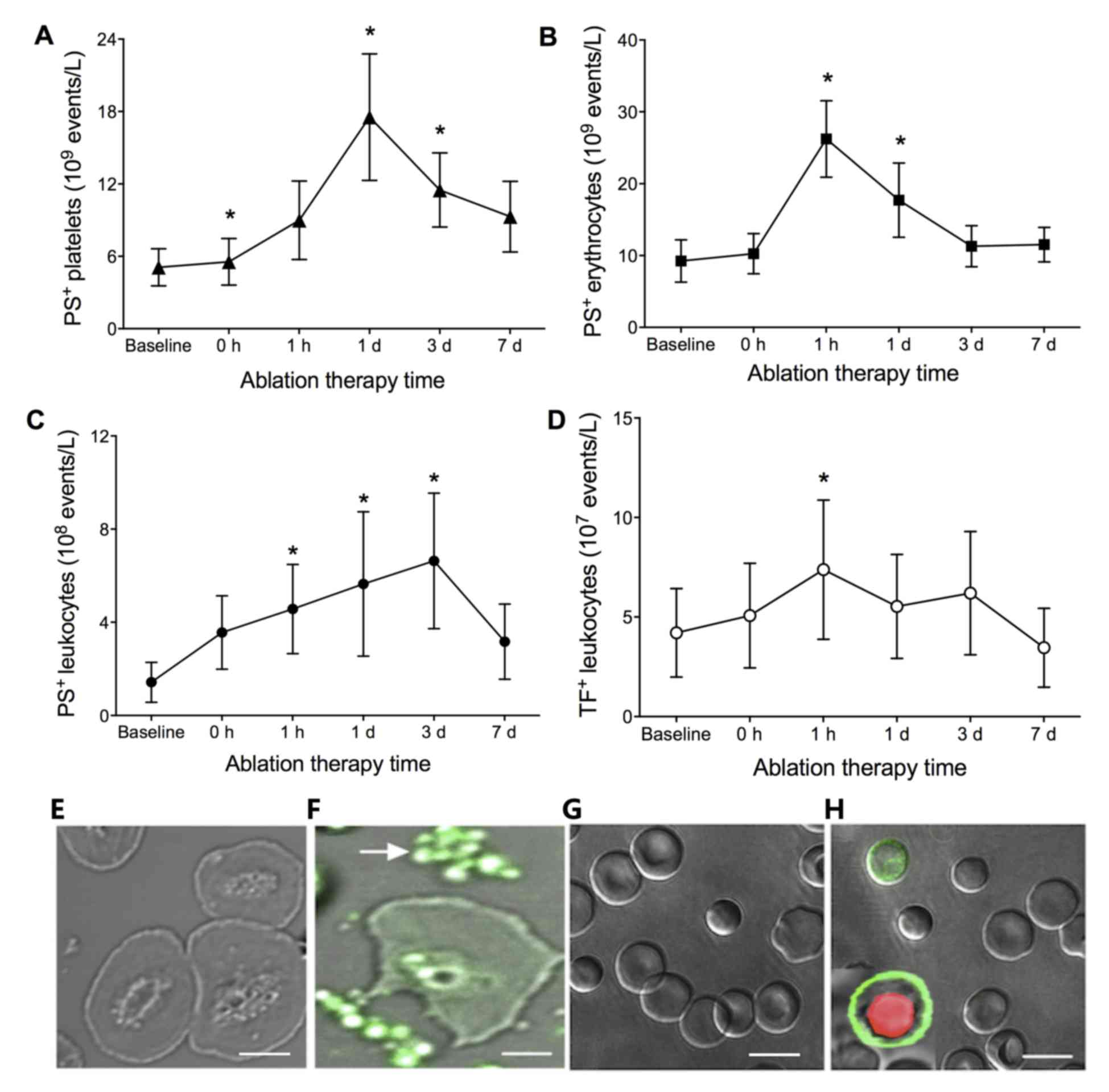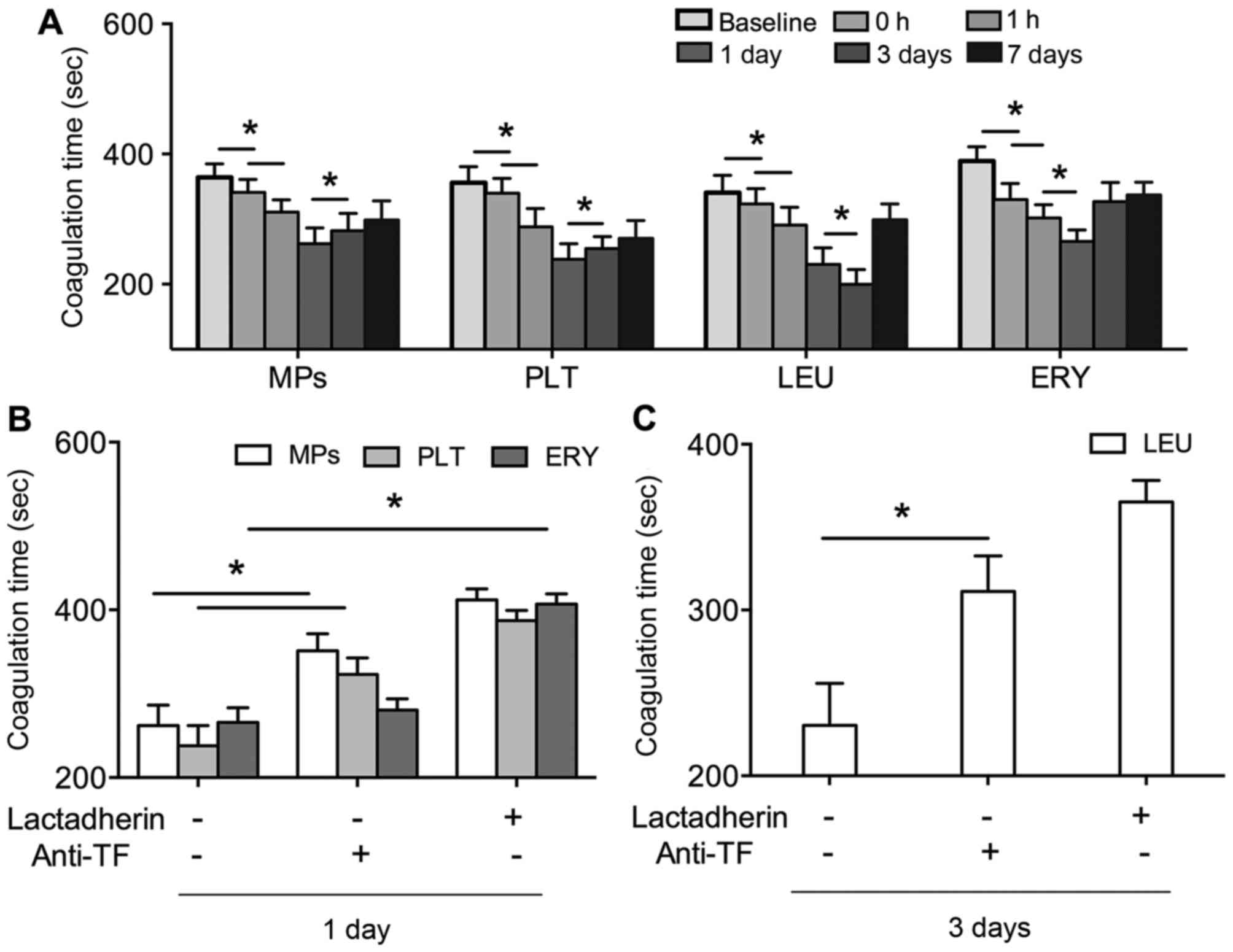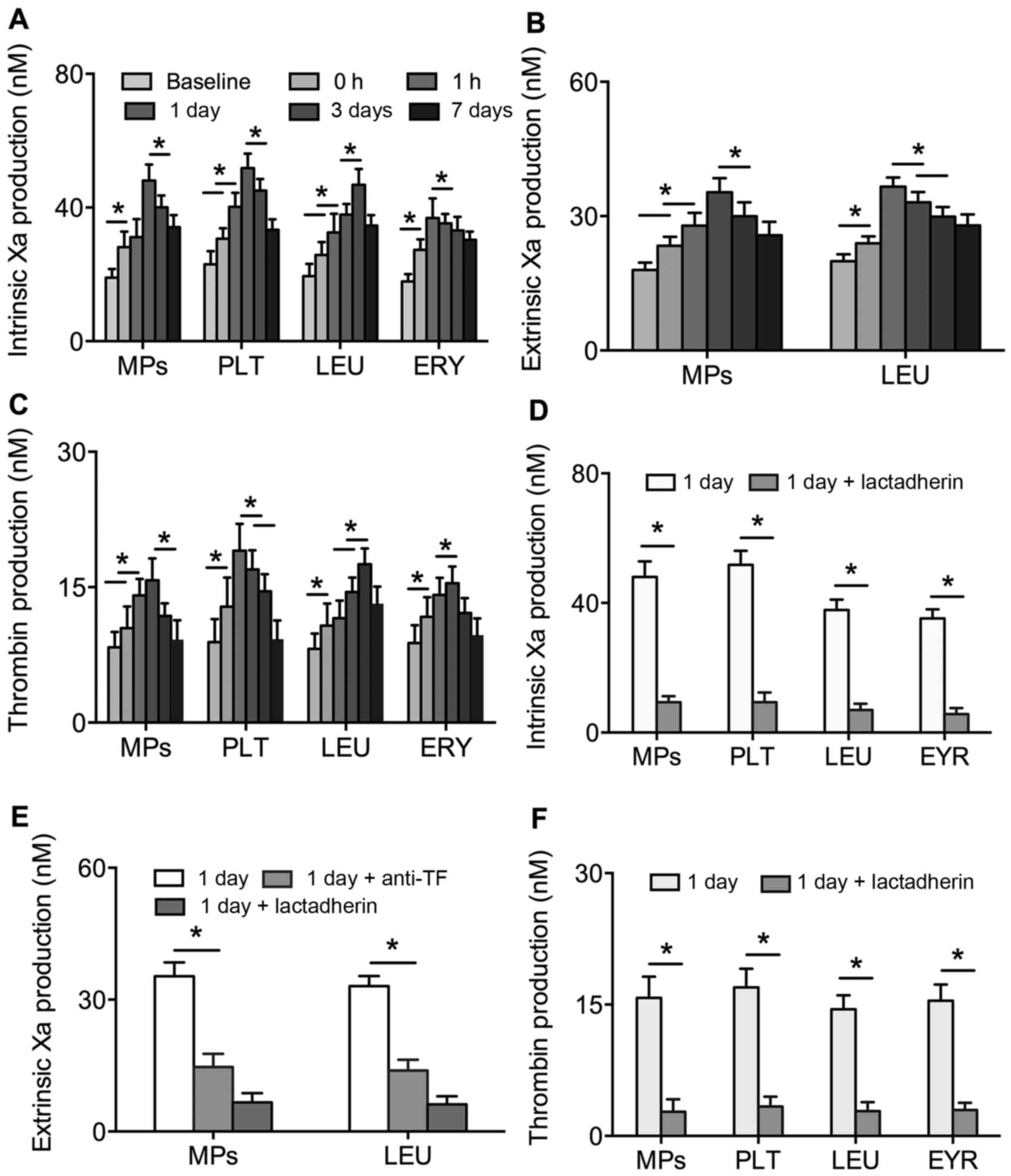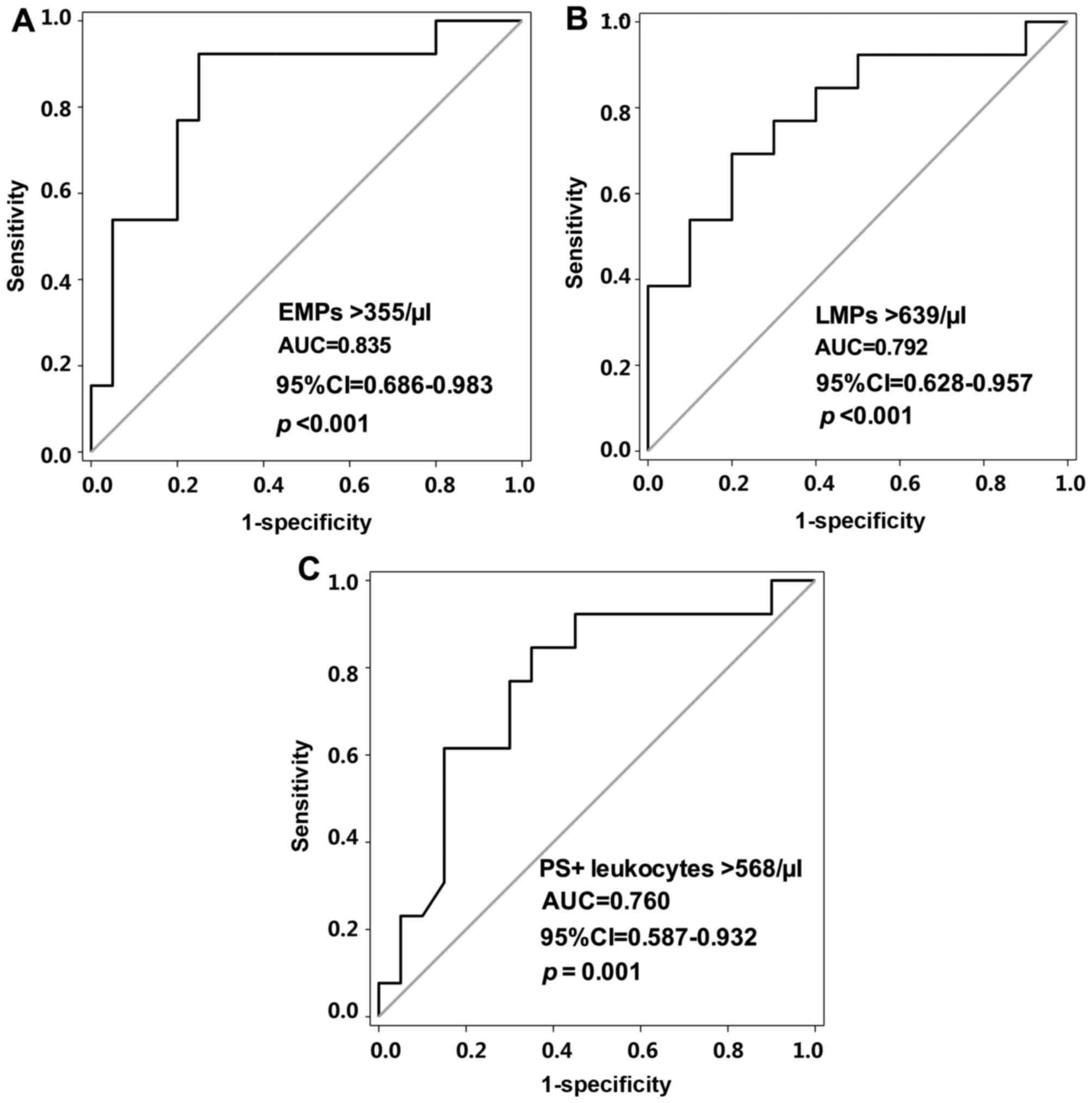|
1
|
Lip GY and Lane DA: Stroke prevention in
atrial fibrillation: A systematic review. JAMA. 313:1950–1962.
2015. View Article : Google Scholar : PubMed/NCBI
|
|
2
|
Calkins H, Kuck KH, Cappato R, Brugada J,
Camm AJ, Chen SA, Crijns HJ, Damiano RJ Jr, Davies DW, DiMarco J,
et al: 2012 HRS/EHRA/ECAS expert consensus statement on catheter
and surgical ablation of atrial fibrillation: Recommendations for
patient selection, procedural techniques, patient management and
follow-up, definitions, endpoints, and research trial design. J
Interv Card Electrophysiol. 33:171–257. 2012. View Article : Google Scholar : PubMed/NCBI
|
|
3
|
Noel P, Gregoire F, Capon A and Lehert P:
Atrial fibrillation as a risk factor for deep venous thrombosis and
pulmonary emboli in stroke patients. Stroke. 22:760–762. 1991.
View Article : Google Scholar : PubMed/NCBI
|
|
4
|
Kiedrowicz RM, Kazmierczak J and
Wielusinkski M: Left atrial massive thrombus formation on the
transseptal sheath despite adequate anticoagulation with warfarin
and heparin during pulmonary vein isolation. J Cardiovasc
Electrophysiol. 24:11852013.PubMed/NCBI
|
|
5
|
Lim HS, Schultz C, Dang J, Alasady M, Lau
DH, Brooks AG, Wong CX, Roberts-Thomson KC, Young GD, Worthley MI,
et al: Time course of inflammation, myocardial injury, and
prothrombotic response after radiofrequency catheter ablation for
atrial fibrillation. Circ Arrhythm Electrophysiol. 7:83–89. 2014.
View Article : Google Scholar : PubMed/NCBI
|
|
6
|
Siklódy C Herrera, Arentz T, Minners J,
Jesel L, Stratz C, Valina CM, Weber R, Kalusche D, Toti F, Morel O
and Trenk D: Cellular damage, platelet activation, and inflammatory
response after pulmonary vein isolation: A randomized study
comparing radiofrequency ablation with cryoablation. Heart Rhythm.
9:189–196. 2012. View Article : Google Scholar : PubMed/NCBI
|
|
7
|
Stazi A, Scalone G, Laurito M, Milo M,
Pelargonio G, Narducci ML, Parrinello R, Figliozzi S, Bencardino G,
Perna F, et al: Effect of remote ischemic preconditioning on
platelet activation and reactivity induced by ablation for atrial
fibrillation. Circulation. 129:11–17. 2014. View Article : Google Scholar : PubMed/NCBI
|
|
8
|
Haeusler KG, Kirchhof P and Endres M: Left
atrial catheter ablation and ischemic stroke. Stroke. 43:265–270.
2012. View Article : Google Scholar : PubMed/NCBI
|
|
9
|
Gaita F, Caponi D, Pianelli M, Scaglione
M, Toso E, Cesarani F, Boffano C, Gandini G, Valentini MC, De Ponti
R, et al: Radiofrequency catheter ablation of atrial fibrillation:
A cause of silent thromboembolism? Magnetic resonance imaging
assessment of cerebral thromboembolism in patients undergoing
ablation of atrial fibrillation. Circulation. 122:1667–1673. 2010.
View Article : Google Scholar : PubMed/NCBI
|
|
10
|
Bulava A, Slavik L, Fiala M, Heinc P,
Skvarilova M, Lukl J, Krcová V and Indrák K: Endothelial damage and
activation of the hemostatic system during radiofrequency catheter
isolation of pulmonary veins. J Interv Card Electrophysiol.
10:271–279. 2004. View Article : Google Scholar : PubMed/NCBI
|
|
11
|
Leventis PA and Grinstein S: The
distribution and function of phosphatidylserine in cellular
membranes. Annu Rev Biophys. 39:407–427. 2010. View Article : Google Scholar : PubMed/NCBI
|
|
12
|
Yeung T, Gilbert GE, Shi J, Silvius J,
Kapus A and Grinstein S: Membrane phosphatidylserine regulates
surface charge and protein localization. Science. 319:210–213.
2008. View Article : Google Scholar : PubMed/NCBI
|
|
13
|
Rysavy NM, Shimoda LM, Dixon AM, Speck M,
Stokes AJ, Turner H and Umemoto EY: Beyond apoptosis: The mechanism
and function of phosphatidylserine asymmetry in the membrane of
activating mast cells. Bioarchitecture. 4:127–137. 2014.PubMed/NCBI
|
|
14
|
Tan X, Shi J, Fu Y, Gao C, Yang X, Li J,
Wang W, Hou J, Li H and Zhou J: Role of erythrocytes and platelets
in the hypercoagulable status in polycythemia vera through
phosphatidylserine exposure and microparticle generation. Thromb
Haemost. 109:1025–1032. 2013. View Article : Google Scholar : PubMed/NCBI
|
|
15
|
Tormoen GW, Recht O, Gruber A, Levine RL
and McCarty OJ: Phosphatidylserine index as a marker of the
procoagulant phenotype of acute myelogenous leukemia cells. Phys
Biol. 10:0560102013. View Article : Google Scholar : PubMed/NCBI
|
|
16
|
Chen VM and Hogg PJ: Encryption and
decryption of tissue factor. J Thromb Haemost. 11 Suppl
1:S277–S284. 2013. View Article : Google Scholar
|
|
17
|
Diamant M, Nieuwland R, Pablo RF, Sturk A,
Smit JW and Radder JK: Elevated numbers of tissue-factor exposing
microparticles correlate with components of the metabolic syndrome
in uncomplicated type 2 diabetes mellitus. Circulation.
106:2442–2447. 2002. View Article : Google Scholar : PubMed/NCBI
|
|
18
|
Geisbert TW, Young HA, Jahrling PB, Davis
KJ, Kagan E and Hensley LE: Mechanisms underlying coagulation
abnormalities in ebola hemorrhagic fever: Overexpression of tissue
factor in primate monocytes/macrophages is a key event. J Infect
Dis. 188:1618–1629. 2003. View
Article : Google Scholar : PubMed/NCBI
|
|
19
|
Joshi S, Choi AD, Kamath GS, Raiszadeh F,
Marrero D, Badheka A, Mittal S and Steinberg JS: Prevalence,
predictors, and prognosis of atrial fibrillation early after
pulmonary vein isolation: Findings from 3 months of continuous
automatic ECG loop recordings. J Cardiovasc Electrophysiol.
20:1089–1094. 2009. View Article : Google Scholar : PubMed/NCBI
|
|
20
|
Takahashi Y, Takahashi A, Kuwahara T,
Fujino T, Okubo K, Kusa S, Fujii A, Yagishita A, Miyazaki S, Nozato
T, et al: Clinical characteristics of patients with persistent
atrial fibrillation successfully treated by left atrial ablation.
Circ Arrhythm Electrophysiol. 3:465–471. 2010. View Article : Google Scholar : PubMed/NCBI
|
|
21
|
Calkins H, Kuck KH, Cappato R, Brugada J,
Camm AJ, Chen SA, Crijns HJ, Damiano RJ Jr, Davies DW, DiMarco J,
et al: 2012 HRS/EHRA/ECAS expert consensus statement on catheter
and surgical ablation of atrial fibrillation: Recommendations for
patient selection, procedural techniques, patient management and
follow-up, definitions, endpoints, and research trial design: A
report of the heart rhythm society (HRS) task force on catheter and
surgical ablation of atrial fibrillation. Developed in partnership
with the European heart rhythm association (EHRA), a registered
branch of the European society of cardiology (ESC) and the European
cardiac arrhythmia society (ECAS); and in collaboration with the
American college of cardiology (ACC), American heart association
(AHA), the Asia pacific heart rhythm society (APHRS) and the
society of thoracic surgeons (STS). Endorsed by the governing
bodies of the American college of cardiology foundation, the
American heart association, the European cardiac arrhythmia
society, the European heart rhythm association, the society of
thoracic surgeons, the Asia pacific heart rhythm society and the
heart rhythm society. Heart Rhythm. 9:632–696.e21. 2012. View Article : Google Scholar : PubMed/NCBI
|
|
22
|
Gao C, Xie R, Yu C, Wang Q, Shi F, Yao C,
Xie R, Zhou J, Gilbert GE and Shi J: Procoagulant activity of
erythrocytes and platelets through phosphatidylserine exposure and
microparticles release in patients with nephrotic syndrome. Thromb
Haemost. 107:681–689. 2012. View Article : Google Scholar : PubMed/NCBI
|
|
23
|
Gao C, Xie R, Li W, Zhou J, Liu S, Cao F,
Liu Y, Ma R, Si Y, Liu Y, et al: Endothelial cell phagocytosis of
senescent neutrophils decreases procoagulant activity. Thromb
Haemost. 109:1079–1090. 2013. View Article : Google Scholar : PubMed/NCBI
|
|
24
|
van Ierssel SH, van Craenenbroeck EM,
Conraads VM, van Tendeloo VF, Vrints CJ, Jorens PG and Hoymans VY:
Flow cytometric detection of endothelial microparticles (EMP):
Effects of centrifugation and storage alter with the phenotype
studied. Thromb Res. 125:332–339. 2010. View Article : Google Scholar : PubMed/NCBI
|
|
25
|
Spronk HM, ten Cate H and van der Meijden
PE: Differential roles of tissue factor and phosphatidylserine in
activation of coagulation. Thromb Res. 133 Suppl 1:S54-S562014.
View Article : Google Scholar
|
|
26
|
Kakkar AK, Mueller I, Bassand JP,
Fitzmaurice DA, Goldhaber SZ, Goto S, Haas S, Hacke W, Lip GY,
Mantovani LG, et al: Risk profiles and antithrombotic treatment of
patients newly diagnosed with atrial fibrillation at risk of
stroke: Perspectives from the international, observational,
prospective GARFIELD registry. PLoS One. 8:e634792013. View Article : Google Scholar : PubMed/NCBI
|
|
27
|
Jesel L, Morel O, Pynn S, Radulescu B,
Grunebaum L, Freyssinet JM, Ohlmann P, Bareiss P, Toti F and
Chauvin M: Radiofrequency catheter ablation of atrial flutter
induces the release of platelet and leukocyte-derived procoagulant
microparticles and a prothrombotic state. Pacing Clin
Electrophysiol. 32:193–200. 2009. View Article : Google Scholar : PubMed/NCBI
|
|
28
|
Puddu P, Puddu GM, Cravero E, Muscari S
and Muscari A: The involvement of circulating microparticles in
inflammation, coagulation and cardiovascular diseases. Can J
Cardiol. 26:140–145. 2010. View Article : Google Scholar : PubMed/NCBI
|
|
29
|
Lwaleed BA, Breish MO, Birch BR, Chowdhary
AP, Saad RA, Perigo O, Kazmi RS, Dusse LM and Cooper AJ: Tissue
factor and tissue factor pathway inhibitor in women with a past
history of preeclampsia: Implication for a hypercoagulable state
postpregnancy. Blood Coagul Fibrinolysis. 25:671–674. 2014.
View Article : Google Scholar : PubMed/NCBI
|
|
30
|
Rao LV and Pendurthi UR: Regulation of
tissue factor coagulant activity on cell surfaces. J Thromb
Haemost. 10:2242–2253. 2012. View Article : Google Scholar : PubMed/NCBI
|
|
31
|
Bach RR: Tissue factor encryption.
Arterioscler Thromb Vasc Biol. 26:456–461. 2006. View Article : Google Scholar : PubMed/NCBI
|
|
32
|
Jesel L, Abbas M, Toti F, Cohen A, Arentz
T and Morel O: Microparticles in atrial fibrillation: A link
between cell activation or apoptosis, tissue remodelling and
thrombogenicity. Int J Cardiol. 168:660–669. 2013. View Article : Google Scholar : PubMed/NCBI
|
|
33
|
Kallergis EM, Manios EG, Kanoupakis EM,
Mavrakis HE, Kolyvaki SG, Lyrarakis GM, Chlouverakis GI and Vardas
PE: The role of the post-cardioversion time course of hs-CRP levels
in clarifying the relationship between inflammation and persistence
of atrial fibrillation. Heart. 94:200–204. 2008. View Article : Google Scholar : PubMed/NCBI
|
|
34
|
Renner B, Klawitter J, Goldberg R,
McCullough JW, Ferreira VP, Cooper JE, Christians U and Thurman JM:
Cyclosporine induces endothelial cell release of
complement-activating microparticles. J Am Soc Nephrol.
24:1849–1862. 2013. View Article : Google Scholar : PubMed/NCBI
|
|
35
|
Grubman E, Pavri BB, Lyle S, Reynolds C,
Denofrio D and Kocovic DZ: Histopathologic effects of
radiofrequency catheter ablation in previously infarcted human
myocardium. J Cardiovasc Electrophysiol. 10:336–342. 1999.
View Article : Google Scholar : PubMed/NCBI
|
|
36
|
Lin YJ, Tsao HM, Chang SL, Lo LW, Tuan TC,
Hu YF, Udyavar AR, Tsai WC, Chang CJ, Tai CT, et al: Prognostic
implications of the high-sensitive C-reactive protein in the
catheter ablation of atrial fibrillation. Am J Cardiol.
105:495–501. 2010. View Article : Google Scholar : PubMed/NCBI
|
|
37
|
Koyama T, Sekiguchi Y, Tada H, Arimoto T,
Yamasaki H, Kuroki K, Machino T, Tajiri K, Zhu XD, Kanemoto M, et
al: Comparison of characteristics and significance of immediate
versus early versus no recurrence of atrial fibrillation after
catheter ablation. Am J Cardiol. 103:1249–1254. 2009. View Article : Google Scholar : PubMed/NCBI
|


















